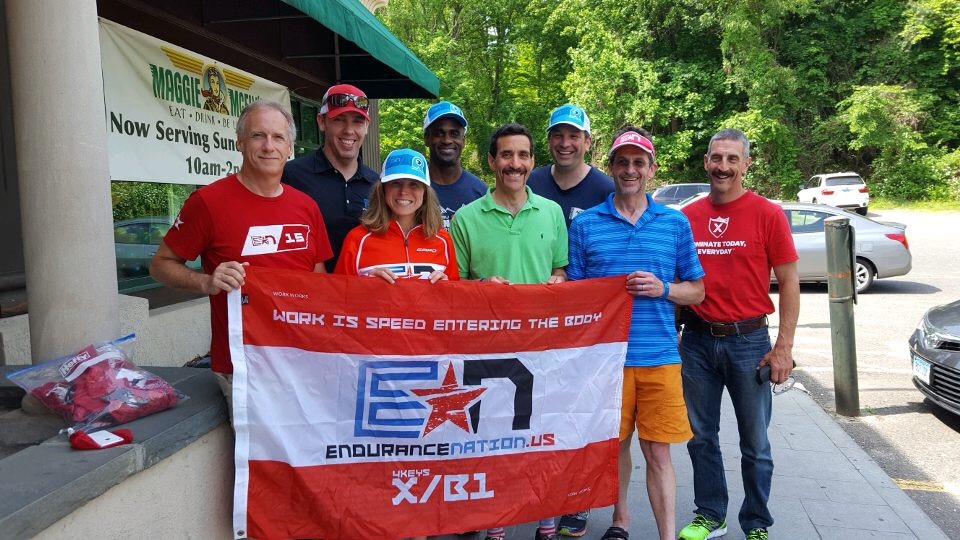
Welcome to the Endurance Nation Short Course Triathlon Series, created to support our 2017 Short Course Triathlon Training Plans.
These 12 week Short Course Triathlon Training Plans are FREE for a limited time! Go here to learn more and gain instant access to your training plan today!
In this first installment of the series, we’ll discuss training fundamentals for short course triathlon, big picture guidance to help you understand the intent and organization of our short course triathlon training plans.
The Box
When training for a triathlon of any distance, you must understand that your life gives you a Box, the dimensions of which are Training Time, Mental Currency, and Spousal Approval Units (SAUs). Any discussion of how you should train should begin with first defining the dimensions of your Box. Your job then, as a self-coached athlete and time investment manager, is to fit all-things-triathlon within your Box AND to keep the size of that Box as small as possible for as long as possible.
If you can do this – fitting triathlon within the dimensions of your Box, and keeping the Box as small as possible for as long as possible – you’re on the path of healthfully fitting triathlon within your greater commitment to living an endurance-based fitness lifestyle.
Let’s next discuss strategies for efficiently managing the dimensions of your Box
The Template Training Week
We highly recommend that you consider the hours you have available to train each week to be relatively fixed. That is, you generally have X hours per day to train on weekdays, Y on the weekends, and those numbers don’t really change much at all. Next, it’s very important that each workout play nicely with it’s counterparts — Monday works well with Tuesday, which sets you up for a successful Wednesday, which flows into Thursday, etc. In fact, this interaction between workouts is often more important than the details of each individual session.
What you’re working towards is a Template Training Week that you largely repeat from week to week, while closely managing the details of each workout within this fixed training schedule.
Don’t know where to begin with creating your Template Training Week? Don’t worry, we’ve done all of the heavy lifting and experimentation for you, available now for FREE in our 2017 short course training plans.
Mental Currency
Just as your training time should be considered fixed, so too is the amount of headspace, or Mental Currency, that you have available to “spend” on the sport.
With three sports to learn how to train for, each with their respective skill sets and gear, triathlon offers us a puzzle to figure out. The puzzle can be fascinating and rewarding as you “level up” season after season, but it can also be addictive. That is, we’ve witnessed…and have been there ourselves…a tendency to think about this, that, and the other thing triathlon. Our advice is to relax, have fun, tap into the experience of those who’ve gone before you…and relax! Play the long game by having a relaxed mental attitude about your growth in the sport. Listen to and learn from others. Make mistakes and learn from those as well!
Spousal Approval Units
Finally, it’s likely that you’re traveling through this triathlon life in the company of a significant other or others — husband, wife, boyfriend, girlfriend, business partner, etc. During your triathlon journey you’ll want to be mindful of if, when, and how you spend their goodwill and support (Spousal Approval Units). Pro tips for conserving SAUs:
- In general, the training volume you do closer to your race will be more valuable to you on race day than volume done farther from the race. For this reason, don’t nickel and dime the people in your life an extra 30-60 minutes here and there months away from your race. Instead, keep your training volume constant, well within the confines of your Box. Be accommodating, flexible, and relaxed with your training, and then set the expectation for a relatively short and focused 3-4 week block of training, rather than expecting the important people in your life to support months and months of hyper-focused “me, me, me” existence.
- Do your best to make your training invisible to those around you. For example, wake up early and get your workouts done on your time, not on other people’s time.
- Finally, while solving the Triathlon Puzzle may be fascinating to you, it’s possible that those around you may not be as interested…or at least in constantly hearing about it. Be mindful of your conversations with others and ensure they are not limited to miles, watts, calories, and carbon aero widgets!
But, wait, you haven’t talked about lactate threshold, functional threshold power, body composition, running frequency, pedaling technique, bike setup, transitions, etc. What gives?
Nope! These big picture principles are the result of over 30 combined years of triathlon coaching and we’ve baked them into all of our training plans, used by thousands and thousands of athletes. These plans themselves contain all of the whizzbangery you’re expecting, but we first wanted to get your mind right about these guiding principles first.
Stay tuned for Part II: Short Course Triathlon Swim Training, and in the meantime go here to pick up your FREE Endurance Nation Short Course Triathlon Training Plan!


Leave a Reply